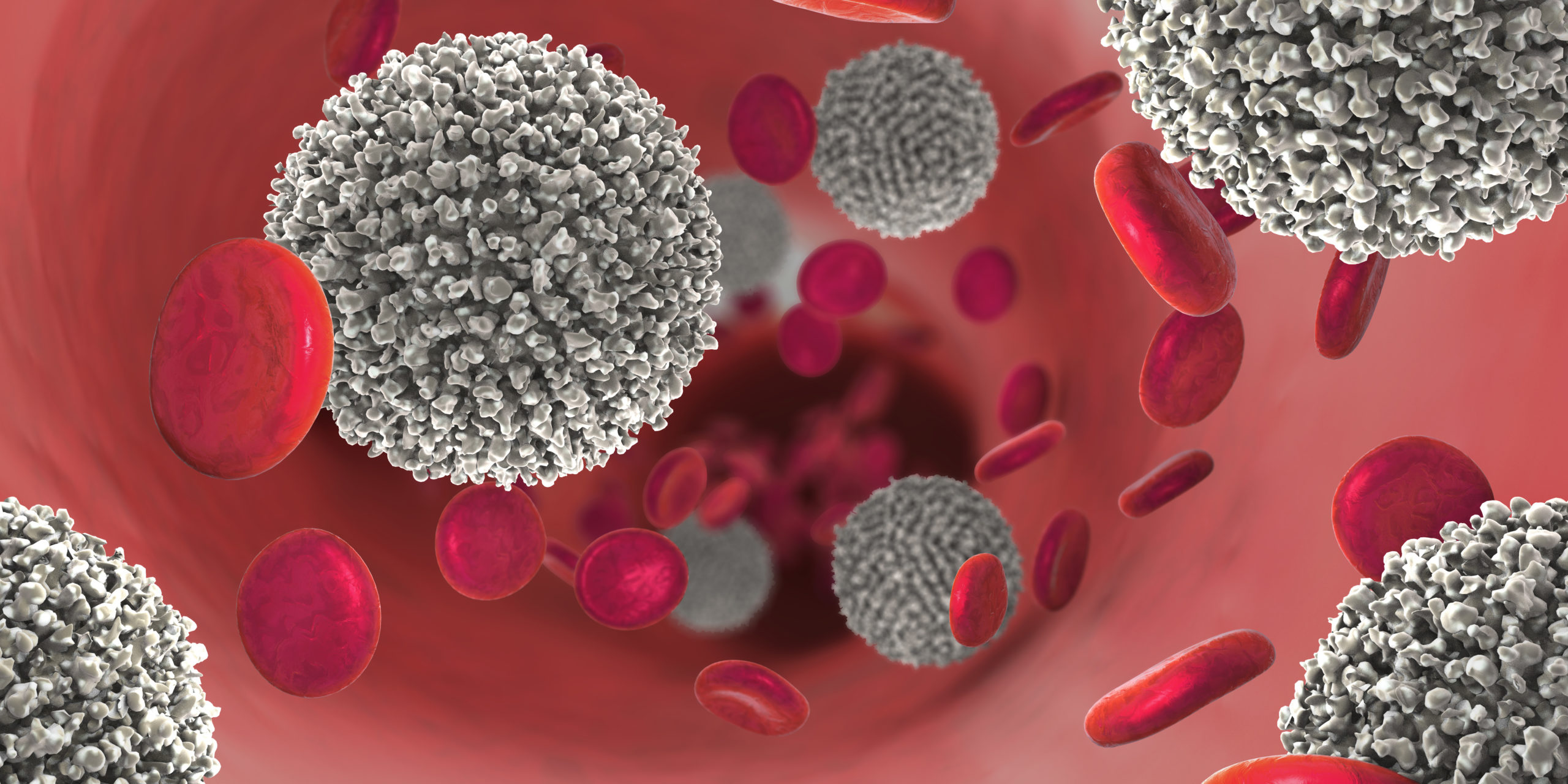Saving lives by donating stem cells
Leukemia was first described as a disease in 1845 by Rudolf Virchow, a prominent physician at Berlin Charité University Hospital. “Leukemia” can be freely translated as “white blood” and refers to the pathological multiplication of white blood cells. Today, several diseases of the blood-forming system are covered by this term. The blood consists of cells that move around in a fluid (blood plasma). These blood cells are divided into three types: erythrocytes (red blood cells) are responsible for transporting oxygen, leukocytes (white blood cells) are responsible for the body’s immune system, and platelets (thrombocytes) are responsible for blood clotting. All these cells have a limited lifespan in the blood, meaning that the body must continuously produce new cells. These cells grow in the bone marrow from so-called blood stem cells by dividing and passing through several stages of maturation, entering the bloodstream as soon as they are functional. This ensures a constant supply of fresh blood containing functional cells.
Pathological multiplication of white blood cells

White blood cells and, in particular, their immature precursors, multiply significantly in the presence of leukemia. The diseased cells displace the healthy cells in the bone marrow. This leads to a deficiency of all three healthy blood cell types, which is expressed in the following way:
- Red blood cells: Paleness and weakness due to worsening oxygen transport
- White blood cells: Increased susceptibility to infections due to a lack of immune cells
- Platelets: Bruising and bleeding that is difficult to control due to impaired blood clotting
Depending on the type of leukemia cells, a distinction is made between myeloid and lymphocytic leukemia. Both types of leukemia can be acute or chronic. Acute leukemia develops very quickly and can become life-threatening within a few weeks without treatment. Conversely, chronic leukemia develops gradually, with symptoms sometimes only appearing after months or years.

A distinction is mainly made between the following types of leukemia:
- Acute myeloid leukemia (AML)
- Acute lymphocytic leukemia (ALL)
- Chronic myeloid leukemia (CML)
- Chronic lymphocytic leukemia (CLL)
The chances of recovery vary depending on the type and severity of the leukemia. Since leukemia is very individual, the attending doctor needs to create a personal treatment plan for each patient. Frequently, however, treatment with chemotherapy or radiation is not sufficient. Transferring (transplanting) healthy stem cells then becomes the only hope of survival.
Indications for a stem cell transplant
The transplantation of healthy stem cells has also proven successful in a number of other blood diseases – especially severe immune deficiencies and diseases requiring particularly aggressive treatment, such as massive chemotherapy or strong irradiation. Examples of diseases include:
- Acute myeloid leukemia (AML)
- Acute lymphocytic leukemia (ALL)
- Chronic myeloid leukemia (CML)
- Chronic lymphocytic leukemia (CLL)
- Myelodysplastic syndrome (MDS)
- Non-Hodgkin’s lymphoma (NHL)
- Hodgkin’s lymphoma (HL)
- Plasmocytoma/multiple myeloma
- Polycythaemia vera
- Osteomyelofibrosis
- Severe aplastic anemia
- Sickle cell anemia
- Fanconi anemia
- Paroxysmal nocturnal hemoglobinuria (PNH)
- Thalassaemia major
- Immunodeficiencies (congenital or acquired, e.g. SCID)
A more detailed list (in German) can be found in the indication catalog of the German Working Group for Hematopoietic Stem Cell Transplantation and Cell Therapy (DAG-HSZT): https://dag-hszt.de/files/downloads/Leitlinien_Kap-04-HSCT%20CAR%20Indikationen%202022%20V4_20220704_.pdf
Questions and answers
The most frequently asked questions and answers about typing and stem cell donation can be found in our FAQs.
From typing to transplantation
Here you can find information about the process of a stem cell donation from the perspective of the patient and the donor at a glance.
Would you like to sign up?
Simply contact your nearest donor center. More information about the donor centers and their locations can be found on our address page.




